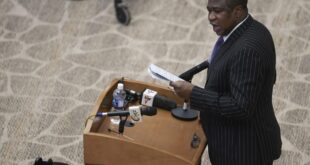Zimbabwe anticipates a 17,4 percent surge in electricity production this year, as the country seeks to reduce expensive imports and load shedding that negatively affected businesses and households in 2023.
The optimistic outlook is based on the expected full incorporation of Hwange Thermal Power Station units 7 and 8, and the projected 142 percent increase in electricity generation by independent power producers (IPPs), from 33 megawatts (MW) per day to 80MW per day.
The construction of the US$1,5 billion thermal power plant was completed early last year and will add a combined 600MW to the national grid.
Zimbabwe Energy Regulatory Authority (ZERA) said a total of 14 IPPs with a capacity of 95,99MW are currently contributing to the national grid, with several other projects at different levels of implementation, as Zimbabwe moves towards energy efficiency.
According to ZERA, renewable energy technologies now dominate the licensed power projects, in line with the country’s quest for increased cleaner and sustainable power supplies by the year 2025.
Zimbabwe has no shortage of sunlight, which places the country in a better position in the push for green energy use.
The country’s installed capacity of renewable energy, excluding large-scale hydropower, is expected to increase from about five percent in 2017 to about 27 percent in 2030.
ZERA chief executive Mr Eddington Mazambani said in an interview that 19 licences for electricity generation of 563,50MW were issued.
“Further, 23 new licence applications were received during the year with a total capacity of 446,99MW. Four were for captive power, 12 for own consumption and seven for selling power to the Zimbabwe Electricity Transmission and Distribution Company,” he said.
Mr Mazambani further said the authority continued to routinely monitor these projects quarterly to ensure they are adhering to the conditions of their licences.
Finance, Economic Development and Investment Promotion Minister Professor Mthuli Ncube last month said: “In 2024, electricity generation is expected to recover by 17,4 percent, on account of expected full commercialisation of Hwange 7 and 8 and upscaling of maintenance programmes, as well as expected new solar IPP projects.
“However, electricity generation at Kariba and Hwange 1-6 will remain constrained by low water levels and the ongoing life extension programme, respectively.”
At the same time, national power demand is expected to increase to 1 866.70MW a day, from 1 700MW.
The positive thing is the country also expects to see a 100MW reduction in imports to an average of 200MW a day.
Engineer Takudzwa Mangwana, an expert in the energy sector, commended the development.
“The expected full commercialisation of Hwange 7 and 8 and the substantial increase in power generation by IPPs mark a pivotal stride towards addressing the country’s persistent power challenges. These endeavours are integral to stabilising our national grid.”
According to Eng Stella Zvinya, the strategic measures taken, especially on the Hwange power plants and the collaborative efforts with IPPs, are indicative of a concerted effort to augment electricity capacity.
“It underscores a commitment to not only meet the current demands but also to create a more resilient and sustainable power infrastructure.”
Economist Mr Tinevimbo Shava shed light on the broader economic implications of this power resurgence.
“The expected 17,4 percent recovery in electricity generation is poised to bring about substantial economic benefits. The reduction in daily imports by 100MW is a crucial milestone.
“This translates into significant cost savings and a more balanced trade position for Zimbabwe, bolstering economic resilience in the face of external challenges.”
According to the National Development Strategy 1 (NDS1), energy is a key enabler of the acceleration of the country’s modernisation and industrialisation agenda, as well as sustainable socioeconomic growth.
To address perennial power shortages in the country, the Government is undertaking several electricity generation projects, most of which are financed by extra-budgetary funds, loans and the private sector.
In line with NDS1, providing reliable and low-cost energy access is the Government’s top priority. Additionally, an efficient energy supply sector is in line with the Government’s intention to provide economic growth and stability.
The Government intends to increase Zimbabwe’s overall electricity supply from 2 317MW of installed capacity to 3 467MW by 2025.
In addition, the Government wishes to construct 280km of electricity transmission lines across the country with the main aim of stopping all electricity imports by 2025. The Herald
 Nhau News Online News that is accurate, reliable, trustworthy!!
Nhau News Online News that is accurate, reliable, trustworthy!!
